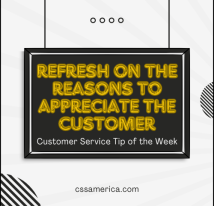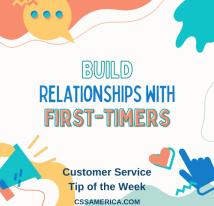
As somebody who has customer service as a part of their role and responsibilities, you are often talking to customers who could access the answers to their questions or the solutions to their problems via a website or some social media resource. But instead of going to those communication vehicles or maybe after going to those vehicles, they have come to you.
In coming to you, many customers have the expectation that you can provide something beyond what they can find on a website or beyond what they can experience via social media customer service. They expect you to bring something extra to the table.
So, what do you bring that goes beyond the content they can find online?
First, Listening and Empathy. By engaging your organization online, customers cannot experience a sense that the organization cares about them personally, is willing to listen to their concerns, and cares about understanding what’s unique about their situation. So, listening is something extra you bring to the table. Empathy and a sense of understanding/caring is something they don’t get from those other communication vehicles.
Second, a Can-do Attitude. What customers experience online from your company includes a series of steps, facts, FAQ’s, and other information. But that online presence doesn’t really convey a true solution-oriented mindset. it doesn’t necessarily create a feel that the company desires to help them with their need. With your tone, words, and responsiveness, you convey the kind of Can-do attitude that is difficult to replicate online.
Third, an Understanding of Internal Processes. Oftentimes, that extra something you bring to the table is your internal knowledge of how your organization works. Few companies can or should open the doors and allow customers to see all the detailed innerworkings of their business. However, that internal knowledge you have helps you to guide the customer quickly and effectively down the path they need to succeed.
Finally, your Dot-Connecting Expertise. The customer may have an issue, a need, or a goal, and your organization might have a process, a product, or a service. But the company’s web presence is typically not designed to connect those dots. However, you have the knowledge and expertise to match the customer’s need with the specific solution your company offers.
In this day and age of online customer service, realize that there’s so much you can and should bring to that service situation that your company’s web presence cannot fully address.
Bring Something Extra to the Table.
Signup for FREE Tips! Contact Us More Resources for You Visit Our Home Page






















